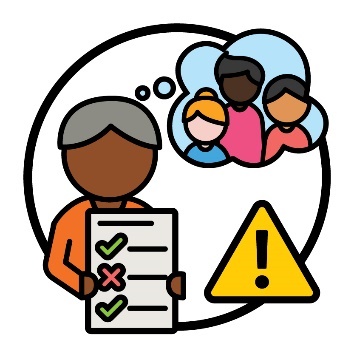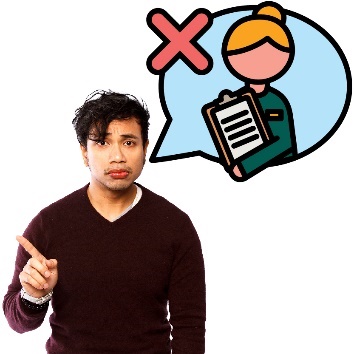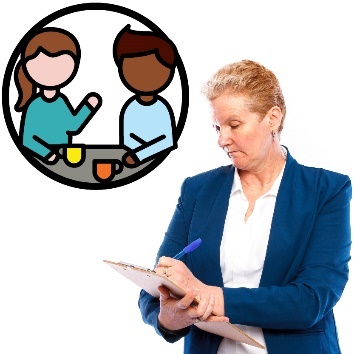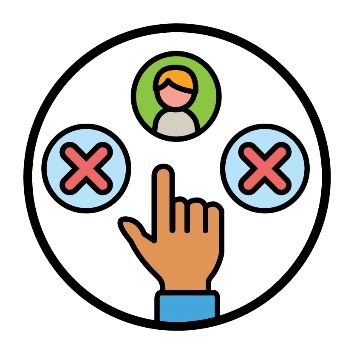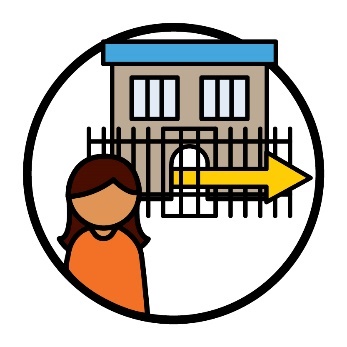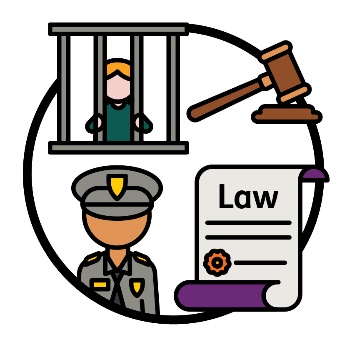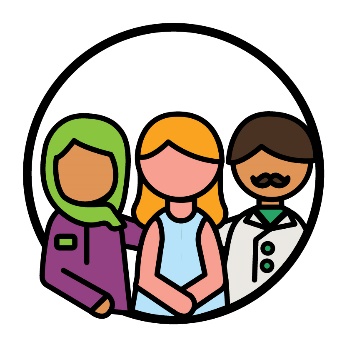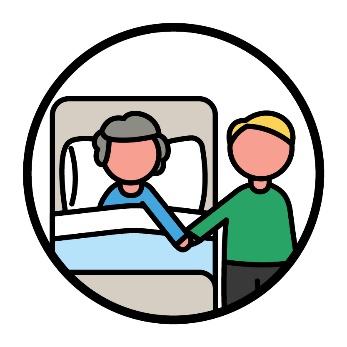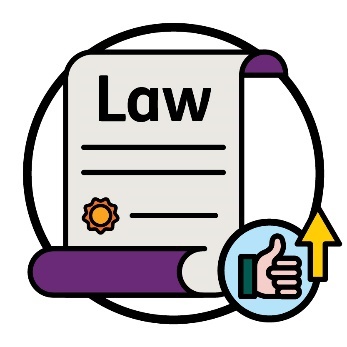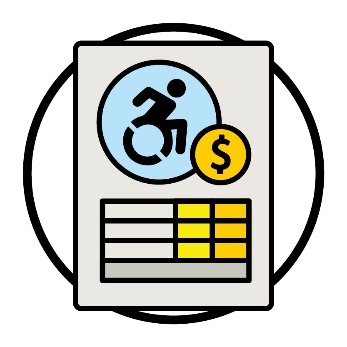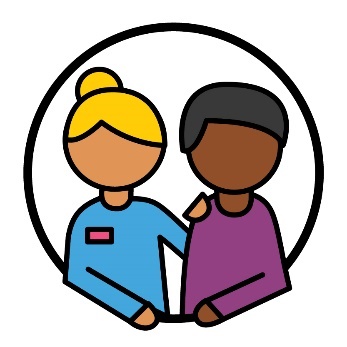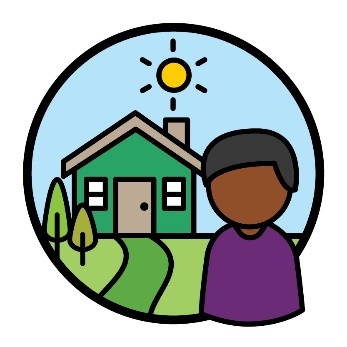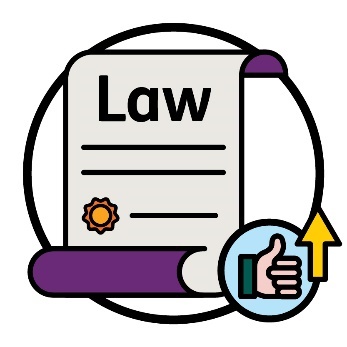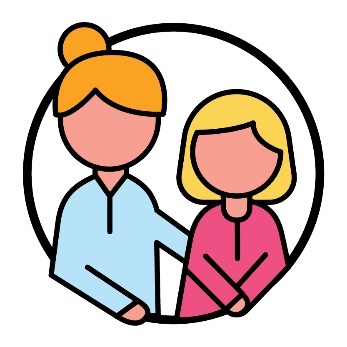Our reports
|
|
The Reference Group connected with the community to find out about issues that affect them. |
|
|
The Reference Group members shared these issues with the NDIA. |
What did the reports talk about?
NDIS plans
|
|
Reference Group members worry that people tell older participants to leave the NDIS when they have health issues because of their age. |
|
|
Participants are people with disability who take part in the NDIS. |
|
|
Members shared that the NDIS have more face‑to‑face meetings with participants. And this makes the community happy. |
|
Members also shared that there should be a focus on how home and living supports can help people: |
|
|
|
|
|
|
|
|
|
|
|
|
Members explained that some participants have to wait a long time for home and living support. This means some participants can’t get the support they need when they need it. |
|
|
Members also explained that some people with disability don’t apply to the NDIS. This includes people with disability who live far away from cities and towns. |
|
|
They might not apply to the NDIS because there are not enough providers where they live. |
|
|
Providers support people with disability by delivering a service. |
NDIS services and supports
|
|
Reference Group members worry that information about specialist disability accommodation (SDA) is hard to understand. |
|
|
SDA is housing for people with disability who need extra support most of the time. |
|
|
Members shared that some families don’t get the support they need as their child gets older. |
|
|
For example, some families don’t get support to understand how their child can apply to the NDIS. |
|
|
Some people with disability live on their own. Members worry that some NDIA staff make them feel like they have to share their home with others. |
|
|
Members shared that people with psychosocial disability should get housing that supports them to do things on their own. |
|
|
A psychosocial disability affects your mental health. It can affect how you:
|
For example, housing that gives people with psychosocial disability their own: |
|
|
|
|
|
|
|
|
|
|
|
|
An intellectual disability affects how you:
|
|
|
Members explained that some people with intellectual disability don’t feel safe in supported independent living (SIL) housing. |
|
|
SIL is help with day-to-day tasks around your home so you can:
|
|
|
People with intellectual disability should have more support to help them decide:
|
Providers
|
|
Reference Group members shared that some providers build accessible housing where it suits them. |
|
|
When housing is accessible it:
|
This might make it harder for people with disability to find a home close to their: |
|
|
|
|
|
|
|
|
|
Members also shared that the NDIS has rules that can make it hard for providers to find people to live in their housing. |
|
|
Members explained that some providers don’t let participants use other providers for SDA supports. |
|
|
Some providers also keep track of who visits participants. This makes participants unhappy. |
|
|
Members worry that some participants don’t have choice and control over who they live with in SDA. |
The community and other services
|
|
Reference Group members shared that some people with disability find it hard to find a home that meets what they need. |
||
|
|
This includes people with disability who leave the justice system. |
||
|
|
Our justice system includes:
|
||
|
|
Members explained that the NDIA should work with the health system to support people with disability. |
||
|
|
For example, they should work together to support people with disability in palliative care. Palliative care is a support for when you are near the end of your life. |
||
|
|
You use palliative care when you have an illness that:
|
||
|
|
Members also explained that the NDIA should support the Australian Government to improve laws about Special Disability Trusts. |
||
|
|
Special Disability Trusts are set up by the family of a person with disability who needs a lot of support. |
||
They put money into the trust to help pay for future: |
|||
|
|
|
||
|
|
|
||
|
|
The Australian Government should improve laws about Special Disability Trusts to support the current cost of housing. |
||
|
|
Members shared that some guardians chosen by the government don’t include people with disability in the decisions they make. |
||
|
|
A guardian is a person who acts and makes decisions for you. Your guardian might be:
|
||






























